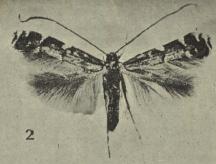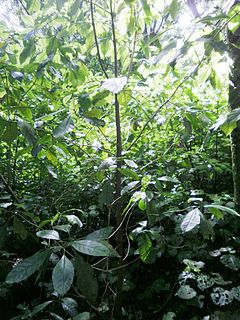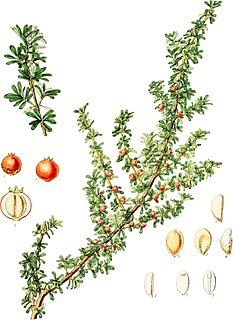
Coprosma robusta, commonly known as karamu, is a flowering plant in the family Rubiaceae that is endemic to New Zealand. It can survive in many climates, but is most commonly found in coastal areas, lowland forests, or shrublands. Karamu can grow to be around 6 meters tall, and grow leaves up to 12 centimeters long. Karamu is used for a variety of purposes in human culture. The fruit that karamu produces can be eaten, and the shoots of karamu are sometimes used for medical purposes.

Coprosma is a genus of flowering plants in the family Rubiaceae. It is found in New Zealand, Hawaiian Islands, Borneo, Java, New Guinea, islands of the Pacific Ocean to Australia and the Juan Fernández Islands.

Thomas Frederick Cheeseman was a New Zealand botanist. He was also a naturalist who had wide-ranging interests, such that he even described a few species of sea slugs.

Coprosma repens is a species of flowering shrub or small tree of the genus Coprosma, in the family Rubiaceae, native to New Zealand. Common names include taupata, tree bedstraw, mirror bush, looking-glass bush, New Zealand laurel and shiny leaf.

Coprosma rhamnoides is an endemic shrub in New Zealand. It forms a small shrub up to 2 m tall. The leaves are very small, simple and variable in shape. The inconspicuous flowers are unisexual and believed to be wind pollinated. It is widespread in occurrence and can be the dominant small leaved divaricating shrub in some locations

Coprosma rugosa, also known as the needle-leaved mountain coprosma, is a shrub in the coffee family, Rubiaceae, that is native to New Zealand. It is found in grasslands and forest margins up to the subalpine zone. C. rugosa bears small purple-white berries in autumn, the seed of which is widely dispersed by birds. It is considered a very hardy shrub and is suitable for hedging.

Coprosma propinqua is a New Zealand plant of the genus Coprosma in the family Rubiaceae. Its Māori name is mingimingi, a name which is also applied to closely related species such as C. dumosa, C. rhamnoides, C. virescens and C. crassifolia. It is a small-leaved shrub or tree which grows 3 to 6 metres high. It has divaricating branches, and is common in swampy forest, in scrub, along stream banks and in stony places. It has a wide distribution, ranging from Mangonui in the North Island as far south as Stewart Island. It grows from sea level to 460 metres.

Coprosma petriei, commonly mirrorplant, is a mat-forming shrub native to New Zealand. It is a hardy wind pollinated plant that is 0.1 m (4 in) by 0.5 m (20 in). Seeds mature in August and the plants only produce either male or female seeds; they are not self-fertilizing.

Acrocercops zorionella, also known as the karamu leafminer, is a species of moth in the family Gracillariidae. It is endemic to New Zealand.

Coprosma perpusilla, commonly known as creeping coprosma, is a species of flowering plant in the family Rubiaceae. It is found in Australia, New Zealand and on some subantarctic islands. The specific epithet comes from the Latin per (very) and pusillus, referring to the growth habit.

Coprosma autumnalis or C. grandifolia according to earlier Colenso authority, is a native forest shrub of New Zealand. Its widespread in both the North and South Islands, and has the largest leaves of any New Zealand coprosma.

Coprosma rotundifolia is a native forest shrub of New Zealand found on the North, South, and Stewart Islands.

Coprosma foetidissima, commonly known as stinkwood or hūpiro, is a shrub native to New Zealand.

Coprosma rigida, is a shrub that is native to New Zealand. C. rigida grows to 4 metres high and is found in shady, damp forest areas with poor drainage. Typical habitat for it is on river banks and forest edges.

Coprosma wallii, is a rare shrub found in New Zealand.

Coprosma rubra is a shrub native to New Zealand.

Coprosma cuneata, is a shrub in the Rubiaceae family, native to New Zealand.
Coprosma laevigata, the Rarotongan coprosma, is a herbaceous plant, a member of the Rubiaceae family.

Thunder Creek Falls is a waterfall in Mount Aspiring National Park, Westland District, New Zealand. It is located in the Haast River valley, around 52 kilometres (32 mi) inland from Haast, near the Gates of Haast bridge on State Highway 6. The falls are about 28 metres (92 ft) high and the base is at an elevation of around 120 metres (390 ft) where it flows into the Haast River.
















